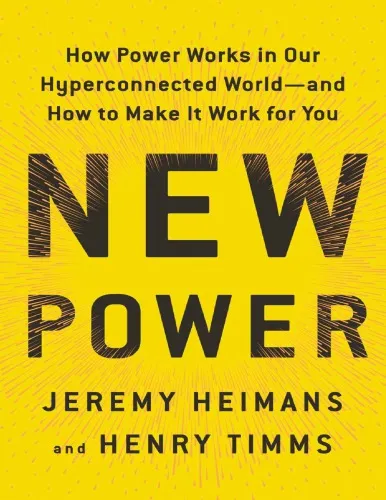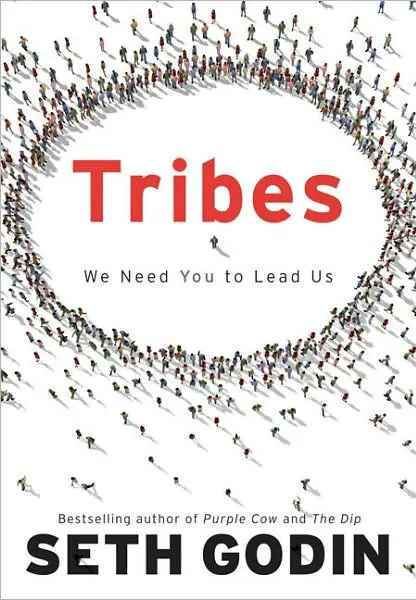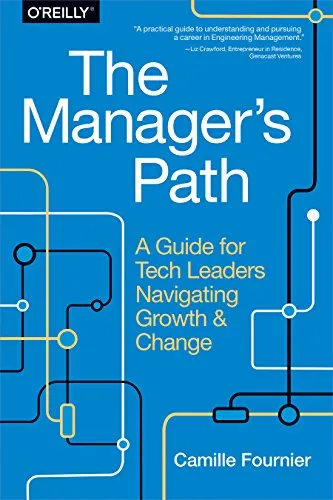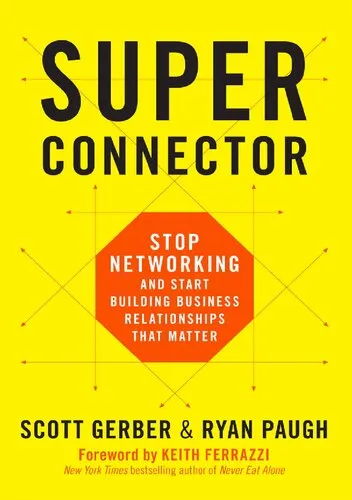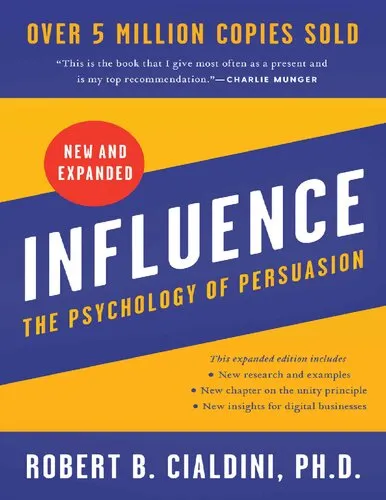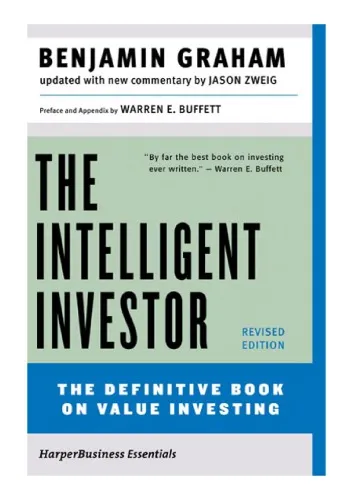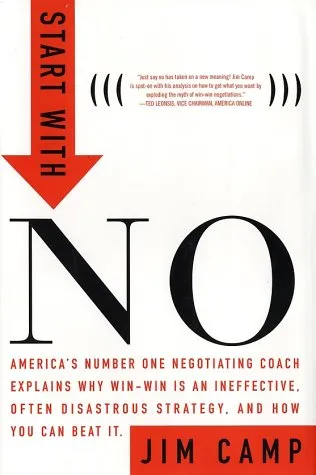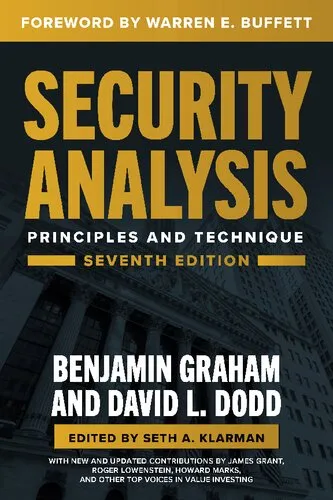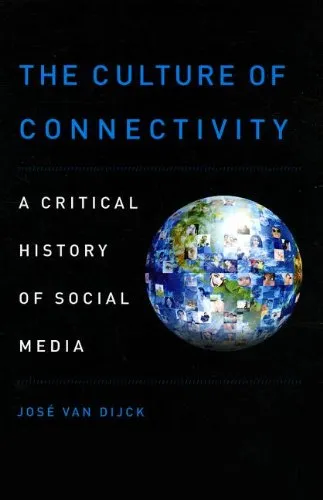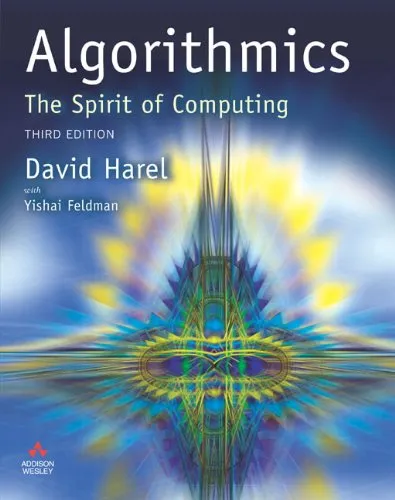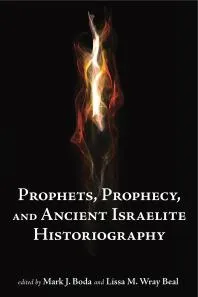New Power: How Power Works in Our Hyperconnected World--And How to Make It Work for You
4.5
بر اساس نظر کاربران

شما میتونید سوالاتتون در باره کتاب رو از هوش مصنوعیش بعد از ورود بپرسید
هر دانلود یا پرسش از هوش مصنوعی 2 امتیاز لازم دارد، برای بدست آوردن امتیاز رایگان، به صفحه ی راهنمای امتیازات سر بزنید و یک سری کار ارزشمند انجام بدینکتاب های مرتبط:
معرفی کتاب "New Power: How Power Works in Our Hyperconnected World--And How to Make It Work for You"
کتاب "New Power" نوشته جِرِمی هایمنز و هنری تیمز، اثری است که به بررسی مفهوم قدرت و تحول آن در جهان فراپیوندی کنونی میپردازد. این کتاب بینشهای جدیدی را درباره نحوه کارکرد قدرت مدرن ارائه میدهد و به افراد و سازمانها نشان میدهد چگونه میتوانند به طور مؤثرتری از این قدرت جدید بهرهبرداری کنند.
خلاصه مفصل کتاب
در "New Power"، نویسندگان به مقایسهای بین قدرت سنتی یا "قدرت قدیمی" و "قدرت جدید" میپردازند. قدرت قدیمی بیشتر به مدل بالا به پایین متکی است؛ در حالی که قدرت جدید از همکاری، مشارکت و اشتراک گذاری بهره میبرد. هایمنز و تیمز با ارائه مثالهایی از جنبشهای اجتماعی گرفته تا کسب و کارها و فناوریهای نوین، تفاوتهای این دو نوع قدرت را برجسته میکنند.
یکی از مباحث کلیدی کتاب، این است که قدرت جدید به کسانی که دارای مهارتهای شبکهسازی و توانایی جلب مشارکت عمومی هستند، امکان میدهد تا با سرعت و قدرت بیشتری به اهداف خود برسند. اینجاست که قدرت عوام تأثیرگذارتر از پیش نمایان میشود. نویسندگان نشان میدهند که چگونه افراد یا سازمانهای کوچک، اگرچه ممکن است منابع معدودی در اختیار داشته باشند، با بهرهگیری از قدرت جمع، میتوانند تغییرات بزرگی ایجاد کنند.
نکات کلیدی
- قدرت جدید به سرعت با استفاده از مشارکت جمعی و ابزارهای دیجیتال گسترش مییابد.
- برای موفقیت در این دوران، افراد باید قادر به ایجاد و مدیریت جوامع آنلاین باشند.
- نظامهای سلسلهمراتبی سنتی در مواجهه با این قدرت جدید بسیار شکننده هستند.
- نوآوری، شفافیت و انعطافپذیری از مشخصههای اصلی قدرت جدید است.
جملات معروف از کتاب
"در دنیایی که همه ما به طور مداوم به هم متصل هستیم، قدرت متعلق به کسانی است که توانایی مدیریت مشارکت و شبکهسازی را دارند."
چرا این کتاب مهم است
کتاب "New Power" به دلایلی چندین اهمیت دارد. اول، به افراد و سازمانها کمک میکند تا درک کنند که چگونه میتوانند موقعیت خود را در یک جهانی که به سرعت در حال تغییر است، تقویت کنند. دوم، با ارائه استراتژیهای عملی، این کتاب به خوانندگان کمک میکند تا به طور مؤثرتری از قدرت جمعی و دیجیتال بهرهبرداری کنند. در نهایت، کتاب به تشریح مفاهیمی میپردازد که برای همه ما در زندگی شخصی و حرفهای ضروری است: چگونه در یک محیط پویا و متحول موفق شویم.
چگونگی استفاده از قدرت جدید نه تنها یک مهارت بلکه یک ضرورت برای بقا و پیشرفت در دنیای امروز است. همچنین، این کتاب به رهبران نشان میدهد که چگونه میتوانند از این قدرت برای ایجاد اثرگذاری مثبت و جمعی بهره ببرند.
In the fast-paced, hyperconnected world we live in today, understanding how power dynamics are evolving is crucial. "New Power: How Power Works in Our Hyperconnected World--And How to Make It Work for You" by Jeremy Heimans and Henry Timms explores this transformation in depth, offering a comprehensive analysis of the shift from "old power" to "new power" paradigms.
Detailed Summary of the Book
Jeremy Heimans and Henry Timms in "New Power" articulate a fascinating shift in the way power is cultivated and exercised in the modern era. The book identifies how contemporary movements, organizations, and individuals are leveraging a participatory model of power, distinct from the more traditional models that emphasized command-and-control, or "old power." New power is characterized by its open, participatory, and peer-driven approach. Heimans and Timms provide a wide range of real-world examples, from social movements such as #MeToo to revolutionary companies like Airbnb and Uber, demonstrating how these entities have effectively harnessed the connectivity and collaborative capabilities of the digital age to redistribute power and influence. A profound distinction is drawn between how traditional institutions strive to hoard power, while the successful modern entities seek to channel it. The book also delves into the potential pitfalls of new power, discussing how movements that may begin with noble intentions can be co-opted or go astray.
Key Takeaways
- The nature of power is undergoing a radical transformation in the digital age, moving from closed and hierarchical to open and participatory.
- Successful modern leaders and organizations leverage the principles of new power to engage communities, create movements, and build networks that thrive on widespread participation.
- The tools and techniques of new power include creating community ownership, fostering clear values, building a network of super-participants, and mastering new storytelling techniques.
- While new power can democratize access and influence, it is not without risks, such as the potential for echo chambers and misinformation.
- The future will belong to those who can blend old and new power, understanding when each is most effective.
Famous Quotes from the Book
Here are some notable quotes that encapsulate the essence of "New Power":
"Old power works like a currency. It is held by a few. Once gained, it is jealously guarded, and the powerful have a substantial store of it to spend."
"New power operates differently, like a current. It is made by many. It is open, participatory, and peer-driven. The goal with new power is not to hoard it but to channel it."
Why This Book Matters
Heimans and Timms' exploration of power is not just theoretical but immensely practical and relevant. As the digital landscape evolves, understanding how power is structured and exercised becomes vital for anyone looking to have an impact—whether in business, advocacy, community organization, or personal branding. The book provides strategic insight into how to effectively harness new power to create change and influence in a world where old rules no longer apply.
Moreover, "New Power" challenges readers to critically assess their own roles within these dynamics and consider how they can contribute to a more participative and equitable distribution of power. It's both a wake-up call and a toolkit for embracing a future defined by connectivity and collaboration.
دانلود رایگان مستقیم
شما میتونید سوالاتتون در باره کتاب رو از هوش مصنوعیش بعد از ورود بپرسید
دسترسی به کتابها از طریق پلتفرمهای قانونی و کتابخانههای عمومی نه تنها از حقوق نویسندگان و ناشران حمایت میکند، بلکه به پایداری فرهنگ کتابخوانی نیز کمک میرساند. پیش از دانلود، لحظهای به بررسی این گزینهها فکر کنید.
این کتاب رو در پلتفرم های دیگه ببینید
WorldCat به شما کمک میکنه تا کتاب ها رو در کتابخانه های سراسر دنیا پیدا کنید
امتیازها، نظرات تخصصی و صحبت ها درباره کتاب را در Goodreads ببینید
کتابهای کمیاب یا دست دوم را در AbeBooks پیدا کنید و بخرید
1540
بازدید4.5
امتیاز0
نظر98%
رضایتنظرات:
4.5
بر اساس 0 نظر کاربران
Questions & Answers
Ask questions about this book or help others by answering
No questions yet. Be the first to ask!
